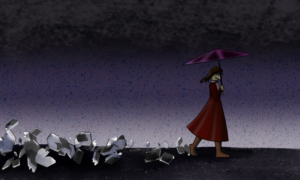The Bechdel Test was concocted by the eponymous Alison Bechdel as a method for determining how well a film represents female characters. Bechdel was a cartoonist who originally came up with the idea for the test as a joke. The test has grown to be far more than a comic strip, and while it has its flaws, it raises some very important points about the nature of gender equality in Hollywood.
The test has three separate components. First, does a film have two or more female characters who have lines? Next, do these females have a conversation with each other? And finally, is that conversation about something other than a male character? It seems overly simplistic, which it is, but an incredible number of major blockbusters fail this litmus test. For example, half of the movies released in 2014 failed the test.
While the test does produce some interesting results, it is not without its flaws. Take a film like Gravity, which does not pass the test because it only has one female character, but then centers on this female protagonist for its entirety. It also allows too many films to slide by without presenting much of a challenge. Limitations notwithstanding, the test still begs one very important question: does Hollywood do a sufficient job of creating female characters?
The short answer? No. But the extent is greater than the one we see on our side of the silver screen. The New York Film Academy released a study that discovered that in 2012, only 4.1 percent of directors, 12.2 percent of writers, and 20 percent of producers were women. Certain male writers have made a name for themselves by writing “strong female characters.” Joss Whedon’s cult hit series Buffy the Vampire Slayer became renowned for its creation of a strong, yet flawed female protagonist. So why don’t more writers do this?
It may be that male writers simply don’t know how to create female characters. There are obvious exceptions to the rule, but the tendency for females in movies is to be relying on or serving male characters. Even worse, writers simply substitute masculine characteristics to make the female stronger. In The Hunger Games, which many point to as the shining beacon of feminism in Hollywood, Katniss Everdeen adopts several masculine characteristics in order to appear strong. She is the archetypal “ass-kicking” female hero that has become the norm in Hollywood. Her range of emotions is good, but simply handing her a bow and arrow and having her shoot things is a poor excuse for crafting a memorable character.
Female characters that are multi-dimensional and layered without having to adopt male characteristics are few and far between. Hollywood needs to learn how to create these types of females that are strong on their own terms, and not on the male’s.
Some recent films have been making progress for gender equality. Disney’s smash hit Frozen was widely praised for its female leads who actually possessed feminine characteristics. In order to accomplish this, screenwriter Jennifer Lee made all of the male characters in the film either incompetent, passive, or downright manipulative and evil. A balance must be struck between the two.
From now on, instead of the Bechdel Test, I propose a different sort of three-step test. Does a female character affect the plot of the film (or TV show) in such a way that a male could not? Do multiple female characters show depth by not constantly serving the male characters? And finally, and perhaps most importantly, could the female characters exist in the film without the presence of a male character? This test is far from foolproof, but it’s a step in the right direction. Integrating more female writers and directors into the production process will help spur some change.
For an industry that enjoys boasting of its progressivism and liberal values, Hollywood has not done a good job of achieving gender equality both behind the camera and in front of it. No one is to blame in particular, but that doesn’t mean that nothing can be done. Writers need to begin to focus on crafting female characters on their own terms, as actual people, instead of implanting masculine characteristics as an easy way to make them appear brave and strong. Until then, it will take more than one of Everdeen’s arrows to break through the glass ceiling in Hollywood.
This article originally appeared in the print edition of the Voice.
Photo: MTV






Jennifer Lawrence, a role model for both men and women. Love the article
Wow! What journalism!
This article is absolutely bang-on. As an educator of grade 10-12 teens, in the field of media studies, I beg your permission to distribute this to my classes!
Permission granted!